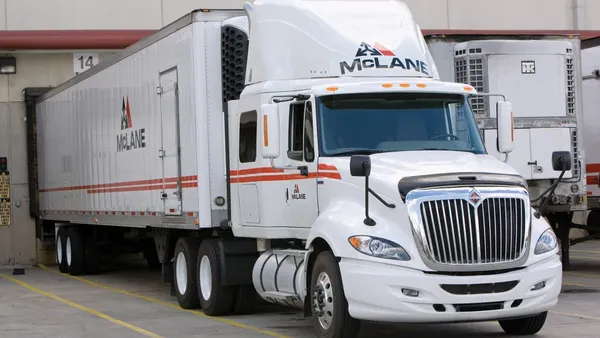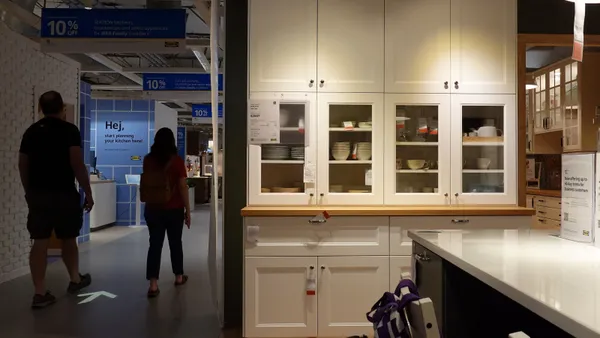Dive Brief:
- Dollar Tree and Family Dollar built their annual business plans for 2019 around the scenario that tariffs on $200 billion worth of imports from China could rise to 25%, Dollar Tree President and CEO Gary Philbin told analysts on the company's fourth quarter earnings call. "If tariffs do not increase, we could see margin opportunity," Philbin said.
- The company estimated potential tariff impact of $100 million at Dollar Tree and $40 million at Family Dollar, under the assumption 10% tariffs would rise to 25% in March.
- Inventory across the stores in Q4 rose 11.4% year over year, as a result of "acceleration of our receipts of certain import goods to minimize the impact of increased tariffs," CFO Kevin Wampler said on the call.
Dive Insight:
"Even in this year if you take the backdrop of both tariffs and freight, we've been able to manage through this year," Philbin said, referring to 2018.
Tariffs can prove particularly taxing for discount stores and low-margin businesses, given the limit to how much the companies are able to raise prices on their products and pass increased costs to consumers.
"We've got to be just better buyers," Philbin said on the company's previous earnings call in December.
The brands made a concerted effort to increase inventory and imports ahead of the tariff hike, a strategy employed by numerous retailers and evidenced by high volumes at U.S. ports.
"Our merchandising teams for both players have done an extraordinary job in tariff mitigation," Philbin said. The CEO said the company has mitigated "most" of the projected impact of tariffs to Dollar Tree and Family Dollar, but didn't specify a number or percentage. On the Q3 call, Philbin said the company had mitigated 80% of the tariff impact for Dollar Tree and 50% for Family Dollar.
By planning for the worst-case scenario of a tariff rise to 25%, Dollar Tree has opened up the opportunity for improved margins if tariffs remain at 10% or are removed altogether. Wampler said the margin benefit would appear in the latter half of 2019.
"As always we're going to manage in real time," Philbin said in response to a question of how the company would adjust numbers or guidance if tariffs do not rise to 25%. "I look forward to the bottom line, where it gives us an opportunity to invest in the business as we see tariffs change from 25 to 10, or 10 to 0."














